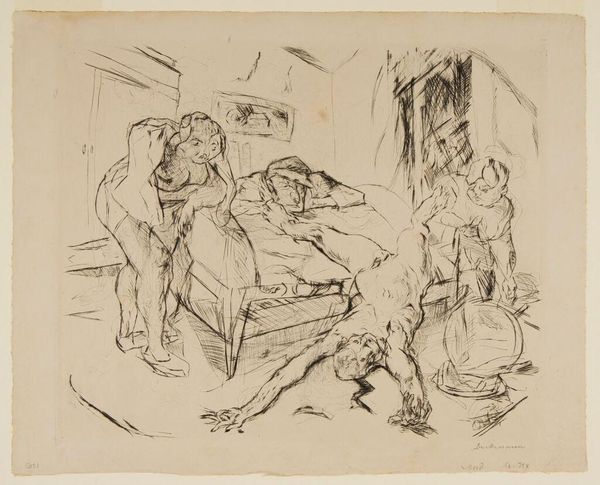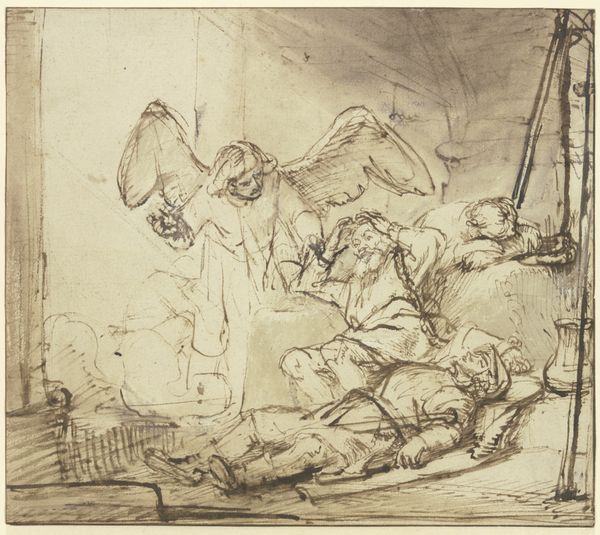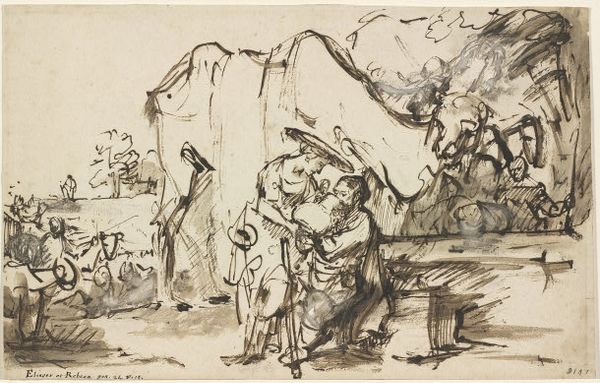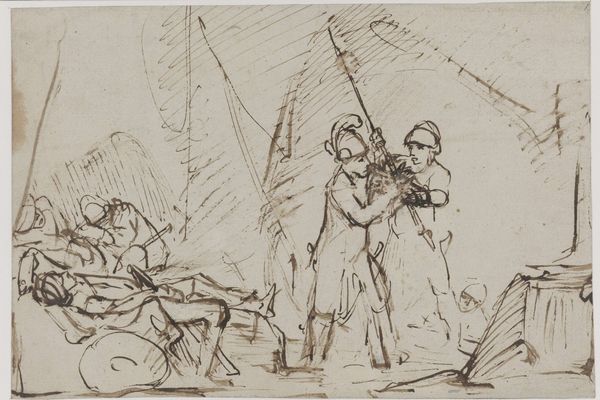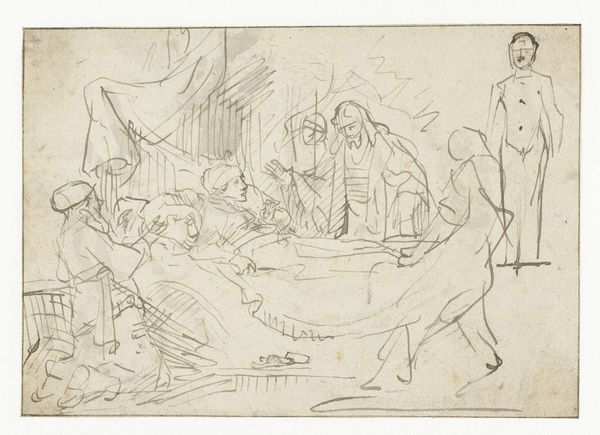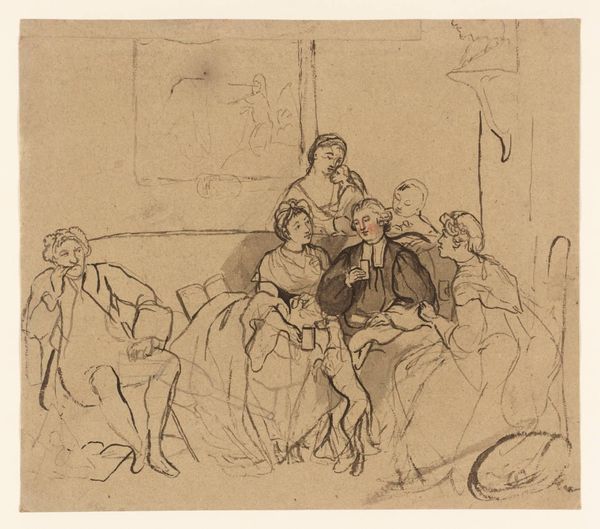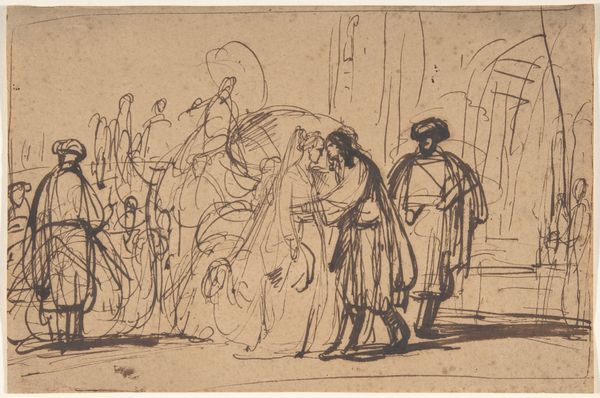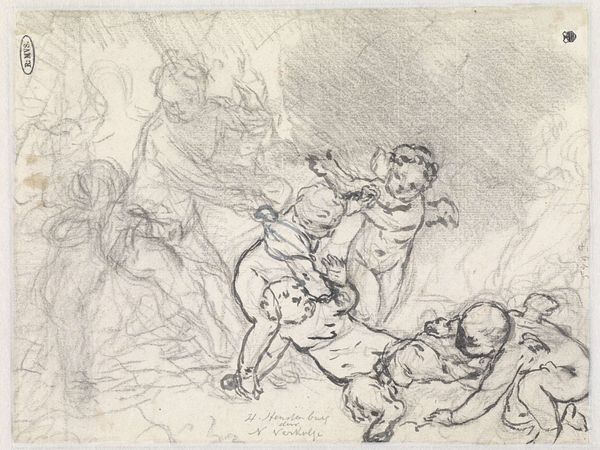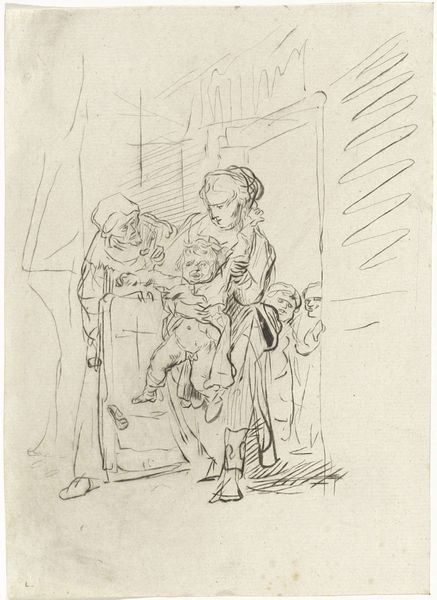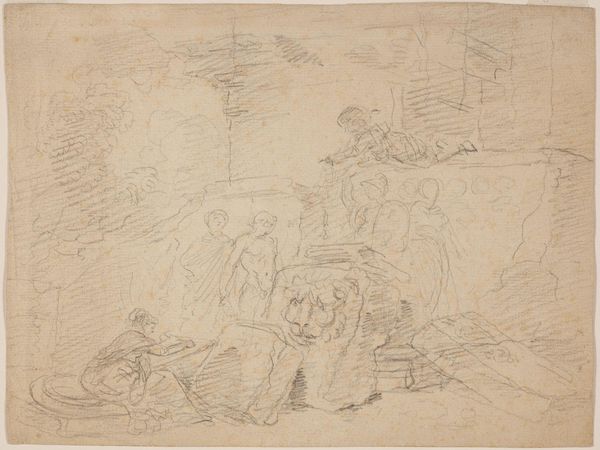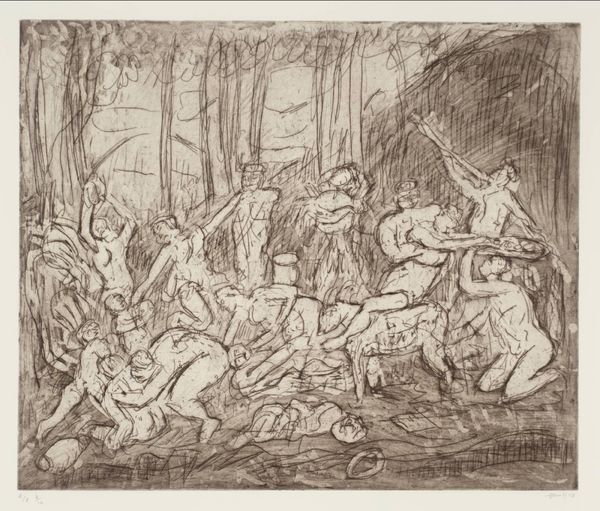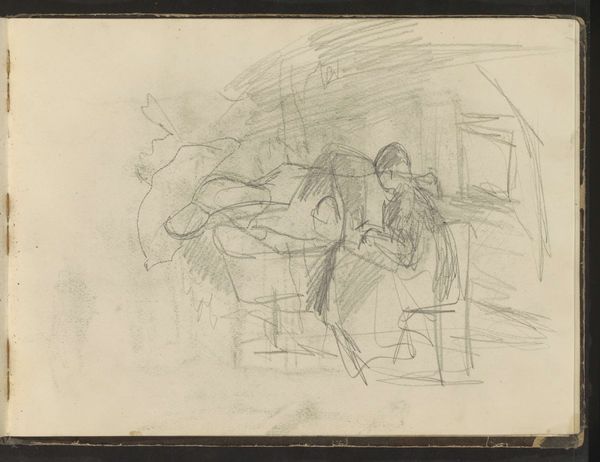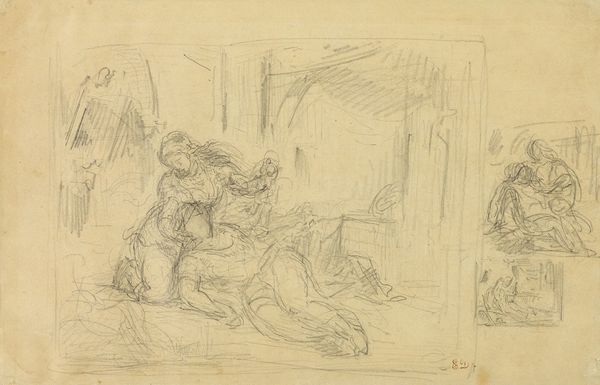
Dimensions: height 192 mm, width 234 mm
Copyright: Rijks Museum: Open Domain
Curator: This work by Louis Bernard Coclers is a drawing entitled "David en Nathan," likely created sometime between 1756 and 1817. It's rendered in ink on paper. Editor: It's stark. Linear, almost unfinished. The ink bleeds slightly, giving it a dreamy quality despite the apparent intensity of the scene. I feel like I'm eavesdropping on a secret, hushed conversation. Curator: That aligns perfectly with the biblical narrative depicted. The prophet Nathan confronts King David about his sin with Bathsheba. The intimate setting enhances that sense of confrontation. What's striking is the immediate connection of baroque styles to biblical references within art from this period, when the aim was usually didactic. Editor: I notice that immediately—the robes, the gestures. Look at Nathan's raised hands, as if beseeching or accusing. The king seems subdued, almost caught. There's something deeply psychological about their posture. What also grabs my attention is how Coclers added that dog as an additional symbolic message to David. Curator: You're picking up on some astute cues, and it's quite clear Coclers uses the contrast in bearing to enhance the message in an era of very strict religious expectations, and also clear signals in terms of composition within this historical context. The use of ink wash is incredibly effective, softening the edges and amplifying the emotions in that specific instance, as opposed to a genre scene, where similar wash techniques could appear rather "theatrical". Editor: The lines, though sparse, contribute to the building tensions and also act as anchors for certain messages from biblical parables, as you mentioned earlier. It’s fascinating how Coclers employed such minimalism to evoke something so emotionally and historically vast. And the cultural significance of such representation as a teaching method cannot be understated, especially because of the literacy levels in the eighteenth century. Curator: Absolutely, and that interplay between accessibility and depth is what makes Coclers' work here still relevant. This single drawing carries a profound narrative weight—it truly speaks. Editor: It makes me want to reread the story... and contemplate the burden of power and moral responsibility in ways beyond religion.
Comments
No comments
Be the first to comment and join the conversation on the ultimate creative platform.
